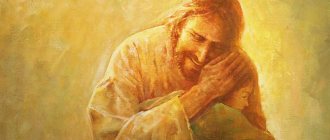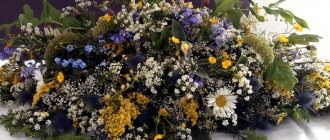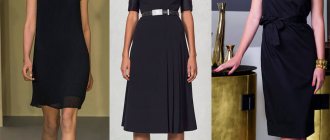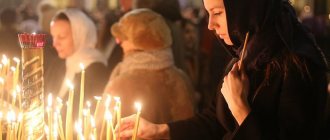Traditionally, black and derivative dark colors are considered “funeral” in Christianity: deep gray or purple. They symbolize grief for the deceased and are an expression of respect of those gathered at the funeral for the deceased person. Buddhists have the opposite approach: they dress in white, rejoicing that the soul has finished earthly ordeals and is ready for a more enlightened next life.
Initially, the color of clothes for funerals was chosen opposite to those that people wore in everyday life. This decision not only separated different events of human life, but also had a sacred meaning: it was believed that in this way the spirits of the dead would not be able to recognize the living who came in order to take them after them. Over time, the camouflage function was leveled out, and in the modern world mourning is an expression of grief.
General recommendations
To show respect and respect for the deceased, it is important to choose the right clothing.
The main requirements for the dress code are modesty and restraint. According to ethical and moral standards, the outfit should be strict, but not too gloomy. It is recommended to adhere to a conservative style. Things need to be selected in dark shades, as they are considered the colors of sadness and sorrow. The vestment must be clean and ironed. What you should not wear to a funeral:
- — Revealing dresses of mini length or with bare shoulders;
- — Light transparent summer sundresses;
- — Patterned shirts;
- — Bright T-shirts and T-shirts, decorated with various rhinestones, beads, and provocative prints;
- — Slippers, sneakers, sneakers.
Muslim funerals - what to wear?
Muslims do not recognize any asceticism; the Koran says that Allah gave people all the colors of the world, and they must use them. They do not consider black a mourning color; this is an innovation that appeared relatively recently, under the influence of European culture. No one has the right to impose a ban on the wonderful gifts given to people by Allah. And immeasurable and demonstrative grief for the deceased indicates that the person is opposing the will of Allah and does not agree with his decision.
There are no words in Scripture about how to dress for a funeral; clothes can be any, any color, and not necessarily black. When going to the funeral of a Muslim, you can wear white or light-colored clothes; clothes in soft green, blue, gray, beige, and cream colors would be appropriate. Naturally, it should not be too short, open, or tight-fitting. It is advisable for women to cover their heads with a scarf or bandage; men go without hats.
Muslim women do not enter the cemetery; they say goodbye to the deceased at the entrance, and then the men bury him. In the mosque, women are in a separate room, but they do not pray. People can visit the grave of the deceased only after the funeral, accompanied by male relatives.
Dress code for women
Attire should be modest and closed. It is inappropriate to wear provocative items to a funeral. It is better to collect your hair and avoid makeup. The use of bright lipsticks and shadows, large amounts of eyeliner and mascara is not allowed.
How a woman should dress for a funeral ceremony:
- — Elegant dress with long sleeves and hem (the straps can be covered with a jacket);
- — A skirt below the knee and a closed blouse;
- — Trousers and jacket;
- — Sweater with pants or a long skirt.
The main requirements for shoes are restraint and comfort. In any case, the toe is closed, so you will have to give up sandals. Bright and provocative over the knee boots, stiletto heels, and sporty styles are not welcome. The ideal solution is ordinary low-heeled pumps.
You are allowed to wear a simple dress without jewelry or additional decor. The optimal length is below the knees. In hot weather, sundresses made of cotton and linen are welcome, but transparent fabrics or mesh should not be used.
How to dress for a funeral as a woman
Traditional mourning clothes for women are dresses or suits with a skirt; in the modern world, these can also be pantsuits. The hem of the skirt should not end above the middle of the knee. The color of the shoes matches or is darker than the color of the suit. You should not choose sports shoes or high heels. Gloves are acceptable as accessories; they should not be lighter than the outfit. In cold weather, you should not complement dark mourning clothes with bright, light, warm clothes.
Jewelry should not be worn to a funeral, with the exception of wedding rings. Since the Victorian era (and Queen Victoria mourned for her husband until the end of her life), jet jewelry has been worn as a sign of mourning. Their black color serves as a reminder of death, and the framing of the stone used to have a symbolic meaning - for example, if a girl died, the decoration was covered with white enamel, and in the case of the death of a child, pearls were added. The Victorian era, during which the average life expectancy did not exceed half a century and death was a frequent guest in the house, a whole industry of mourning jewelry arose - they were made not only with black stones, but also from the hair of the dead - necklaces and bracelets were woven. It was believed that wearing jewelry with the hair of the deceased helps to survive the loss and brings the living and the dead closer.
The main requirement for modern mourning clothing is not only a dark color, but also traditionalism and modesty of the image as a whole. Women should cover their arms and legs in any weather; only the hands are considered appropriate open parts of the body. You should not choose tight clothing models.
It is customary to bring flowers to funerals. Funeral bouquets consist of an even number of buds and do not contain bright shiny wrappers. Funeral etiquette regulates not only the appearance of the participants in the funeral procession, but also their behavior. You cannot behave defiantly, make noise, argue, insult the memory of the deceased or the feelings of his loved ones, push people aside and disrupt order in other ways.
The right option for a man
The optimal outfit for a man is a simple suit in black, grey, brown, blue, green. This is a solemn and modest attire that will not attract too much attention at a funeral. If a man takes an active part in the ceremony, then formal attire is required. For a home ceremony, small liberties are allowed.
Basic selection rules:
- — A tie without patterns or with a modest, appropriate pattern is allowed;
- — If the commemoration is held at home, then a combination of jeans without inscriptions or decoration, a simple sweater, jacket, and shoes is allowed;
- — Sweatshirts with short sleeves are not allowed;
- — Open and sports shoes cannot be used, so it is better to wear shoes (if you don’t have them, then use the most discreet sneakers);
- — The shirt is chosen in neutral colors without ornaments (blue, dark green, blue).
How to dress for a funeral for a man
Men should come to funerals in formal suits, not casual ones. It is better to choose a suit of traditional black color; you can limit yourself to any dark, restrained shade. The shirt is only light, preferably white, a suitable neutral tie without a pronounced pattern is required. Traditionally, socks are matched to the color of the suit. According to the rules of good form, they should be chosen in the same color, but in a slightly different shade: usually socks are chosen a little darker than trousers.
The person organizing the funeral, if necessary, must remind the participants of the funeral ceremony of the norms of mourning etiquette; this is part of the work that makes up the services of a funeral agency.
A harmonious image for a funeral ceremony will only be with correctly selected shoes: they cannot be lighter than the socks. It is better to prefer matte rather than patent leather. Headdress is not usually required except for military and some traditional national burial ceremonies.
In summer, men can attend funerals only in a shirt and tie. In winter, you can’t do without outerwear and hats in black or dark gray. Outerwear should also be classic, not sporty: a coat is preferable to a dutik. In the farewell hall, in the church, at the time of burial, the head should not be covered.
For women, on the contrary, a headdress is required; only in some cases can it be removed while indoors. The head can be covered not only with a scarf, it can be a scarf, a stole, or a hat, with or without a veil, the only requirement is a traditional dark color. Hairstyle should be modest, makeup should be inconspicuous. For men, only a neat hairstyle is acceptable; he should be clean-shaven, and the beard or mustache should be given the correct shape.
How to dress a child
Children are dressed up in the same way as adults. For boys, a classic suit, jeans and a sweater, trousers and a discreet shirt are suitable. Shoes are selected depending on the time of year, but no open sandals or flip-flops.
For girls, a dark dress, tights and closed shoes are suitable. You should not use things with bright prints, cartoon images, lots of bows or rhinestones. Hair is neatly styled. It is recommended to take a sweater or light jacket with you if it gets cold.
Shoes: shoes or slippers
Shoes or traditional funeral slippers can be placed on the deceased's feet. Sometimes nails are removed from ordinary shoes to make the road in the afterlife easier. Shoes should be chosen a size larger so that they fit comfortably on your feet. It is traditional to bury women in shoes with flat soles, without heels and open toes.
Lingerie and accessories
You must wear underwear, stockings or tights on your body. The church does not approve of modern underwear, and mortuary workers find it difficult to put it on bodies. A good solution for a funeral would be loose trousers in a light shade.
A married woman's head should be covered with a headscarf, headscarf or scarf. The outfit should be light in color. At funerals, blue and turquoise scarves are often used: against their background, the face looks less pale. For an elderly woman, it is advisable to choose a black scarf.
Only gold jewelry can be worn on the deceased. But the wedding ring should be removed and preserved for future generations. Hair is usually left down; it is not customary to do hairstyles for funerals. It is believed that there should be no knots on the clothes of the deceased: this will ease the ordeal of the soul in the next world.
After dressing, the body is covered to the waist with a shroud - this is a blanket with embroidered symbols. A handkerchief is often given to a deceased woman. This is another superstition: it is believed that a woman needs a scarf in the afterlife to wipe away her tears.
How to dress for a wake
When going to a wake, you don’t need to think more about your outfit than about the event itself.
Of course, there is a certain dress code here, but the appearance should not distract everyone's attention, which otherwise could put everyone in an awkward position. It is necessary to choose formal clothing. A classic black dress can be replaced with a combination of a knee-length skirt and a white blouse. Women are better off sticking to natural makeup and a neat, discreet hairstyle. Men also need to get their hair in order. Remember that you should look strict, practical and not festive. The only exceptions are the personal preferences of the deceased or his family. For example, a wake may take place at home. Here it would be appropriate to simply wear casual, not flashy clothes. Article rating
Is it possible for a woman to wear trousers to a funeral?
The current question is whether a woman can wear trousers to a funeral. The traditions of recent years do not prohibit this.
There are recommendations:
- during a church funeral service for the deceased, one must give up pants;
- To visit the cemetery you should wear a long skirt.
The dress can be replaced with wide pants made of plain fabric. It is important to combine them correctly with a simple blouse or a warm jacket without decoration.
Women are given more freedom in choosing clothing at secular funeral ceremonies and special wishes of the deceased person. It is allowed to dress in jeans, apply bright makeup, and do unusual hairstyles.
When mourning style does not require rigor
If the deceased person was a creative, extravagant person during his lifetime, and also expressed special wishes regarding the concept of the funeral process, his request should be fulfilled. For example, if most of the guests at the farewell ceremony are extraordinary individuals who profess the same truths as the deceased in their clothing style, you should not force them to come to the funeral exclusively in black robes. If unquestioning adherence to a mourning appearance is not required in this particular case, the relatives of the deceased notify all participants in the funeral ceremony in advance.
Color of clothing for a funeral
In choosing, the main thing is to be guided by the rules of the country, as well as the religion of the deceased. In European countries, the main color for ritual services is black - the color of grief and sadness. This is exactly the kind of mourning vestment that is customary among Christians: Orthodox and Catholics. However, lately there have been no strict restrictions on the choice of palette; the main thing is to keep the outfit in strict muted shades: dark gray (graphite), blue, brown. Suits of scarlet, pink, orange, lilac and other rich, cheerful colors will look inappropriate. Such an outfit is regarded as disrespect for the deceased. In addition, its owner will contrast with other members of the ceremony and be the center of attention, which is disrespectful to the family of the deceased.
However, such laws do not apply everywhere. For example, in the Far East, you can offend the relatives of the deceased by wearing black clothes. For the farewell procession in Japan and China, white clothes are chosen. Also, funeral ceremonies and even dishes are decorated in light colors.
The indigenous people of a number of African countries, Madagascar and some regions of Australia cheerfully and brightly say goodbye to the deceased. Here, it is customary to come to the farewell ceremony in national costumes, colorful ritual vestments, or simply colorful things. Also, festive vestments are worn for the burial of deceased Hindus.
Mourning clothes depending on religion
In Russia, preference is given to Western traditions in mourning clothing. This means that black color prevails. Only recently can we see dark blue suits, dark green dresses or brown skirts as robes.
According to Muslim customs, green and purple colors are also considered mourning colors.
Women stay at home during funerals. Only elderly relatives who know how to control themselves can be present at the burial. Buddhists wear clothes of gray shades. Those who profess Judaism, in addition to the sad color, make a vertical tear in their clothes in the chest area: for parents - on the left, for other close relatives - on the right. April 17, 2021











